 1985 Dacia 1410 Combi Dimensions, Size & Specs
1985 Dacia 1410 Combi Dimensions, Size & Specs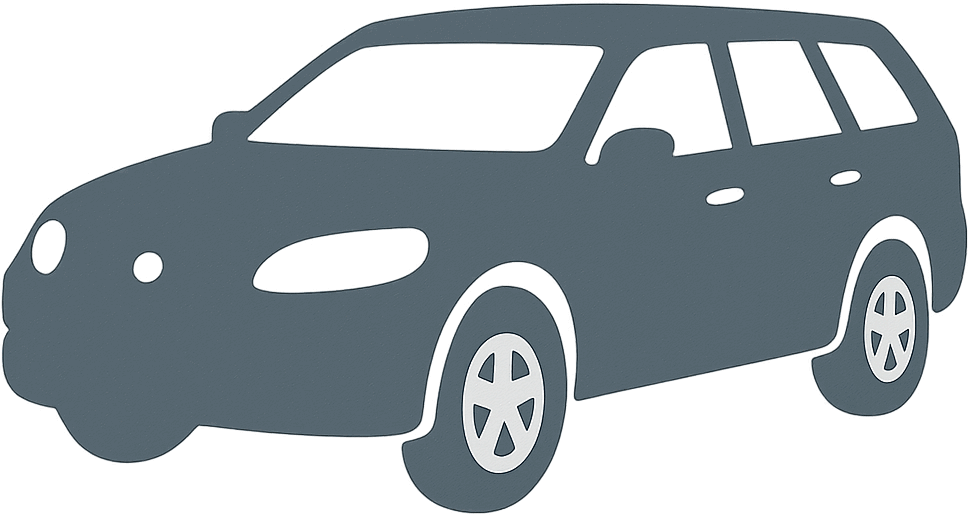
Measurements of the 1985 Dacia 1410 Combi, engineered for optimal performance and comfort
| Dimensions | |
|---|---|
| Length: | 4404 mm173.4 in14.4 ft |
| Width: | 1636 mm64.4 in5.4 ft |
| Height: | 1455 mm57.3 in4.8 ft |
| Trunk Capacity: | 910 liter32.1 cu ft |
| Trunk Capacity (Max): | 1650 liter58.3 cu ft |
| Weight Specifications | |
| Curb Weight: | 960 kg2116 lbs |
| Maximal permitted Weight: | 1360 kg2998 lbs |
| Tire Specifications | |
| Tire Size: |
|
The Dacia 1410 Combi, produced from 1984 to 1998, is a practical station wagon variant of the Romanian Dacia 1410 model. Launched in 1985, this generation offered a spacious and versatile vehicle aimed mainly at families and utilitarian use during its production era. Measuring 4404 mm (173.3 inches) in length, 1636 mm (64.4 inches) in width, and 1455 mm (57.3 inches) in height, the 1410 Combi features a compact footprint typical of 1980s European station wagons, balancing external maneuverability with interior space. The vehicle's curb weight stands at a modest 960 kg (2116 lbs), with a maximum gross weight of 1360 kg (2998 lbs), reflecting its lightweight construction and efficiency. One of the standout features of the 1410 Combi is its generous luggage capacity, boasting 910 liters (32.1 cubic feet) of cargo space when the rear seats are in use. Folding the rear seats increases this capacity significantly up to 1650 liters (58.3 cubic feet), making it highly practical for transporting larger items or bulkier loads. The 1410 Combi rides on modest 155/80 R13 S tires that align with its compact size and contribute to its straightforward driving dynamics. Overall, the Dacia 1410 Combi remains a notable example of a functional and affordable station wagon of its time, offering solid space utilization and compact dimensions well-suited for both urban and rural settings. Its enduring production span demonstrates its popularity and functional design in the Eastern European automotive market.
Discover the standout features that make the 1985 Dacia 1410 Combi a leader in its class
Have a question? Please check our knowledgebase first.
The Dacia 1410 Combi station wagon, produced from 1984 to 1998, measures 4404 mm (173.4 inches) in length, 1636 mm (64.4 inches) in width, and 1455 mm (57.3 inches) in height. These dimensions highlight its relatively compact size for a station wagon of its era, making it suitable for city driving while still allowing ample passenger and cargo space. The car's dimensions reflect the practical design approach typical of Eastern European cars of this period, prioritizing function over flamboyance.
The Dacia 1410 Combi has a curb weight of approximately 960 kilograms (2116 pounds), which is relatively light compared to other station wagons, aiding in better fuel efficiency and easier handling. The vehicle's maximum permissible weight, which includes the total weight of the vehicle with passengers, cargo, and fuel, is 1360 kilograms (2998 pounds). This weight capacity indicates the car’s capability to handle a decent payload for everyday use, making it a practical choice for families and small businesses needing a reliable and economical transport solution.
The Dacia 1410 Combi offers a generous luggage capacity suitable for a station wagon. With the rear seats in place, it provides 910 liters (32.1 cubic feet) of cargo space, enough for groceries, luggage, or medium-sized equipment. Folding down the rear seats increases the capacity significantly to 1650 liters (58.3 cubic feet), allowing for the transport of larger items or greater volumes of goods. This flexibility makes the 1410 Combi a practical and versatile vehicle for both family and commercial uses.
The Dacia 1410 Combi is equipped with tires sized 155/80 R13 S. This size denotes a tire width of 155 mm, an aspect ratio of 80%, and fits 13-inch diameter rims. The 'S' speed rating indicates suitability for speeds up to 180 km/h (112 mph), though given the vehicle's performance capabilities, the tires are mainly optimized for comfort and durability rather than high speed. The relatively narrow tires contribute to modest rolling resistance, promoting better fuel efficiency and easier handling, which suits the 1410 Combi's design as a practical economical vehicle.
Yes, the Dacia 1410 Combi, measuring 4404 mm (approximately 14.5 feet) long and 1636 mm (about 5.4 feet) wide, can typically fit inside a standard single-car garage. Standard garages generally accommodate vehicles up to about 5.5 meters (18 feet) long and 2.5 meters (8.2 feet) wide, so the 1410 Combi's compact dimensions make it suitable for most residential garages. However, clearance may be tight depending on garage door width and any additional storage placed inside the garage, so measuring your specific space is recommended before parking.
Compared to its predecessor, the Dacia 1300 and earlier 1310 models, the 1410 Combi maintained a similar footprint but featured incremental increases in length and cargo volume to enhance practicality. While the exact predecessor station wagon versions varied, the 1410 Combi generally offered more rear cargo space and improved interior flexibility. The design evolution focused on optimizing the vehicle for family and utility purposes without substantially increasing exterior dimensions, allowing it to retain maneuverability and ease of parking in urban settings.
When compared to other European compact station wagons from the 1980s, such as the Volkswagen Passat Variant or the Ford Escort Estate, the Dacia 1410 Combi is somewhat smaller and lighter. Its overall length of 4404 mm (173.4 inches) places it in the compact category, making it easy to drive in tight city environments. While rivals may offer more advanced features and slightly larger interior dimensions, the 1410 Combi's simplicity, reliability, and generous cargo capacity—especially with rear seats folded—make it competitive in terms of practicality. Its lower curb weight aids fuel efficiency, a key consideration during the era.
While specific interior measurements for the Dacia 1410 Combi are scarce, the vehicle's exterior height of 1455 mm (57.3 inches) and width of 1636 mm (64.4 inches) suggest a compact cabin space typical of Eastern European station wagons from the 1980s. Passenger comfort is adequate for a compact family car, with headroom and shoulder room sufficient for average-sized adults. The design prioritizes utility over spaciousness, so taller passengers might find headroom somewhat limited compared to modern standards, but the station wagon layout helps maximize usable interior space versus a sedan of similar size.
The Dacia 1410 Combi has a maximum permissible weight of 1360 kilograms (2998 pounds). Given its curb weight of 960 kilograms (2116 pounds), this yields a payload capacity of approximately 400 kilograms (882 pounds). This payload includes passengers, cargo, and any additional equipment. For typical use, this allows the station wagon to comfortably carry four to five passengers alongside a moderate amount of luggage or goods without risk of overloading, making it versatile for family or light commercial applications.
Produced between 1984 and 1998, the Dacia 1410 Combi served as a practical, budget-friendly station wagon catering primarily to Eastern European markets. Known for its simple, robust mechanical design, it was favored for its ease of maintenance and fuel economy. The car was commonly used by families for daily commuting, as well as by small businesses requiring a reliable and spacious cargo vehicle. Despite lacking advanced features found in Western European cars of the time, it offered essential functionality with a modest footprint, making it a valued vehicle in regions where affordability and utility were paramount.
Discover similar sized cars.
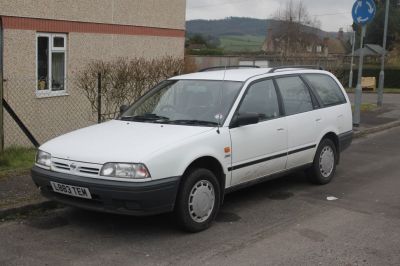
| Production: | 1990-1998 |
|---|---|
| Model Year: | 1990 |
| Length: | 4460 mm175.6 in |
| Width: | 1695 mm66.7 in |
| Height: | 1500 mm59.1 in |
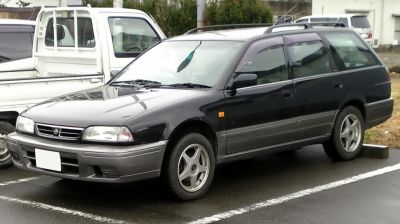
| Production: | 1991-1998 |
|---|---|
| Model Year: | 1991 |
| Length: | 4460 mm175.6 in |
| Width: | 1695 mm66.7 in |
| Height: | 1490 mm58.7 in |

| Production: | 1990-2001 |
|---|---|
| Model Year: | 1990 |
| Length: | 4472 mm176.1 in |
| Width: | 1695 mm66.7 in |
| Height: | 1500 mm59.1 in |
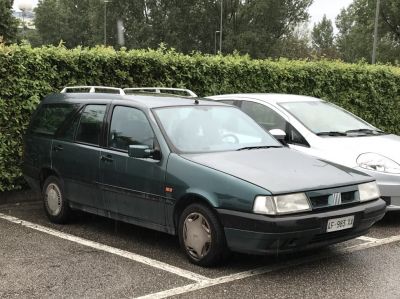
| Production: | 1990-1996 |
|---|---|
| Model Year: | 1990 |
| Length: | 4472 mm176.1 in |
| Width: | 1695 mm66.7 in |
| Height: | 1500-1540 mm59.1-60.6 in |
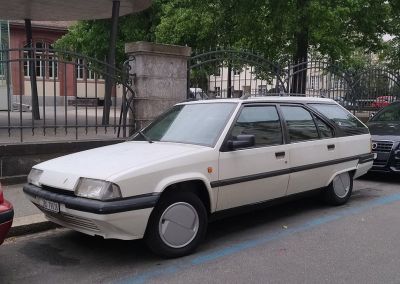
| Model Year: | 1986 |
|---|---|
| Length: | 4399 mm173.2 in |
| Width: | 1650-1660 mm65.0-65.4 in |
| Height: | 1431 mm56.3 in |

| Production: | 1969-2004 |
|---|---|
| Model Year: | 1969 |
| Length: | 4410 mm173.6 in |
| Width: | 1635 mm64.4 in |
| Height: | 1435 mm56.5 in |

| Production: | 1983-2006 |
|---|---|
| Model Year: | 1984 |
| Length: | 4391-4410 mm172.9-173.6 in |
| Width: | 1615-1660 mm63.6-65.4 in |
| Height: | 1460 mm57.5 in |
